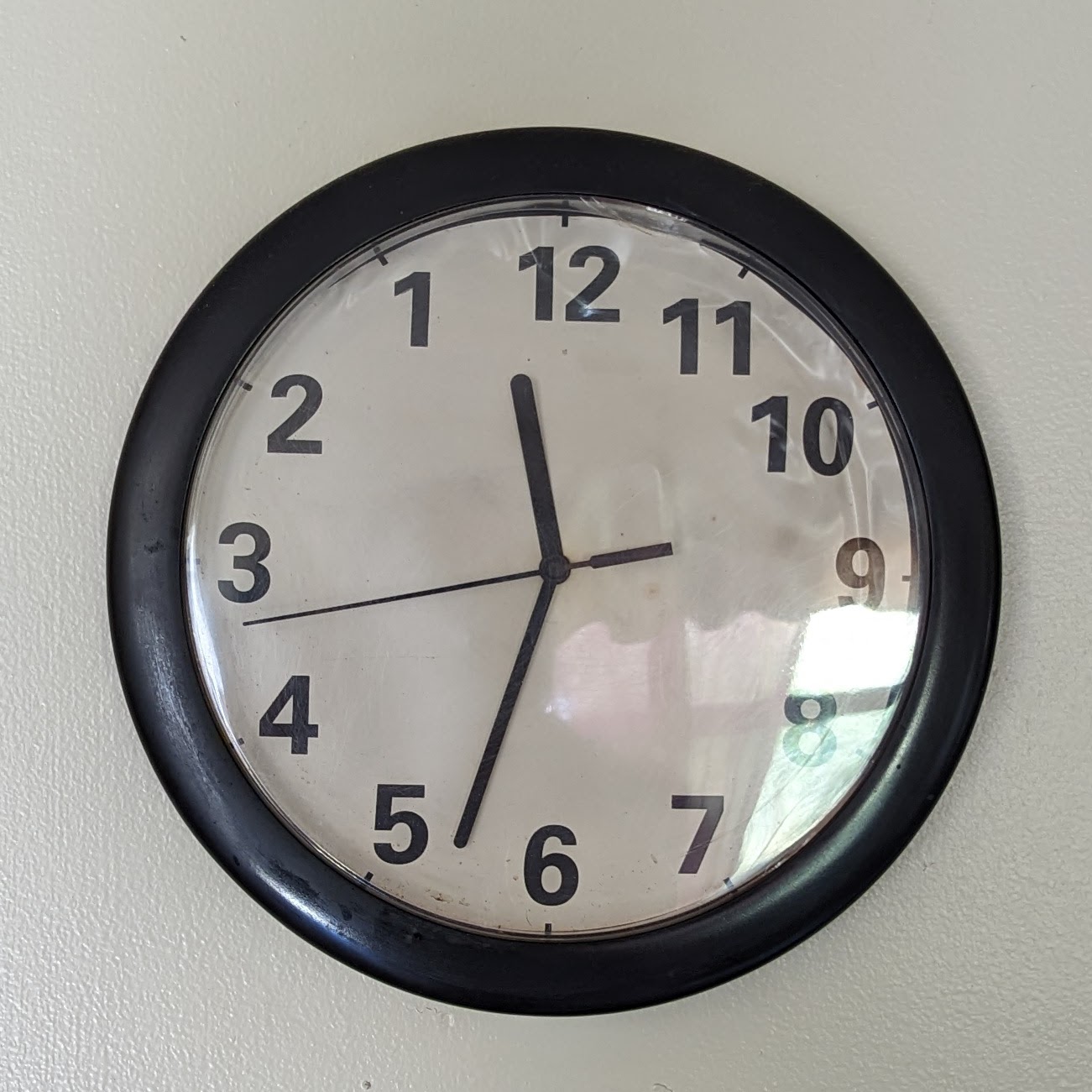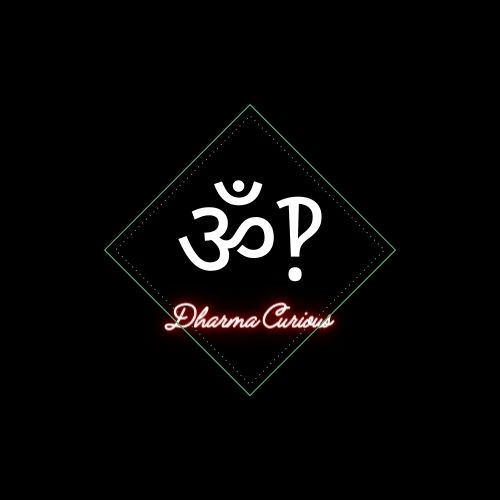Was there an alternative adjective to “clockwise” other than “the rotation you take around left hand”?
Also, how did all watch companies around the world agree on what the direction of “clockwise” is?
You just made my brain click. I’ve always wondered why clockwise rotation around a vertical axis was commonly agreed. I have never seen a mechanical- or electrical clock installed flat on the ground. So why would we assume that the clock isn’t in the ceiling facing down, which would reverse the direction?
But now that you mention it in the context of a sundial, it seems so obvious that the clock is just an extension of that, making the sun and clock a common reference.
But that bids the question if they have another term for it in the southern hemisphere.
“Sunwise”, and for the exact same reason.
Clocks go clockwise because their predecessors did. What were their predecessors?
Sundials.
How does the shadow go around a sundial? Well, sunwise, of course.
Counterclockwise, as said in another comment, was “widdershins”, from a Middle Low German phrase meaning “against the way”.
I find it interesting that in Swedish the opposite of sunwise is “motsols”, i.e. counter sunwise or literally “against the sun”. Sunwise is called “medsols”, lit. “with the sun”.
deleted by creator
ILJM.
Widdershins needs to make a comeback. It’s a cool word
It seems like something a pirate would say. Widder me shins, but that’s a cold wind blowin’!
I am trying to picture it, but I think the sunwise convention only works in the Northern hemisphere.
Yep - in the northern hemisphere a sundial shadow will move from west to east in a clockwise fashion; in the southern hemisphere it still goes west to east but does so moving anticlockwise.
And if I’m thinking about this correctly, people between ~20N and ~20S latitudes will have it reverse throughout the year and and sometimes be a straight line.
Wait, it’s all anglo-centric?
Always has been.
🌍🏴🧑🚀🔫🧑🚀
Yes but, how did people know that time went sunwise before the sun?
Yes but, how did people know that time went sunwise before the sun?
Back before the solar system was fully formed, it was called “gaswise”.
Hi Dad! It’s me, Dad.
I somehow read this comment in the voice of the cleric performing the “mawwiage” ceremony in Princess Bride.
Cleric: “Sunwise…” long, uncomfortable pause. “And for the exact same weason.” Pause. “Clocks go clockwise because their pwedecessors did… and what were their pwedecessors?”
Humperdink: “Look, can we hurry this up?”
Cleric: “Sundials.”
Humperdink: “Just skip to the end!”
Cleric: “Countewclockwise… as said in another comment… would be… widdershins.”
Haha, thank you for this!
Sundials are also responsible for why we say “o’clock”. It’s a differentiatior. Because the speed of a sundial would vary based on the time of year while a clock was constant, you had to clarify what kind of time you were talking about. Did you mean 10 of the clock or 10 of the sun? (Basically no one said o’sun, if you didn’t specify, it was assumed you meant by the sun.) Somehow, that stuck around long after sundials fell out of common use.
I’ve just find (in wiktionary) the word “moonwise”, meaning antisunwise/counterclockwise. But the moon moves the same way as the sun does. So is there some deeper meaning based off of some long-term patterns in lunar movement, or is it just simple antagonism sun×moon?
That’s what it appears to be. This is supported somewhat by the term “moonwise” not having a lot of historical usage, leading me to believe that it came along much later by someone who wanted a related antonym.
The only bit about the moon that seems to travel right to left are it’s phase changes, and even that is because we’re outside the rotation and watching along it’s horizontal plane. You’ll see the same thing with anything spinning clockwise in front of you: the closer edge goes right to left, the farther edge goes left to right.
A guy I know owns this clock, which basically proves that everything in life is pointless and arbitrary:

I find this deeply unsettling, please delete
Weird, this feels easier to read. Less grating somehow.
Also why the seemingly arbitrary graduations, 24 hours, 60 minutes, 60 seconds. If it was say 10 hours in a day, 100 minutes in an hour, 100 seconds in a minute, seconds would be close to the same amount of time. Same with latitude and longitude, why 360 degrees in a circle with 60 minutes in a degree and 60 seconds in a minute.
It’s all based on 12, which is nice cause it’s divisible by 2, 3, 4 and 6.
A system based on 10 gives you issues if you want to divide the year into 4 seasons, the day into morning, midday, evening and night, the compass into cardinal directions, etc…The short explanation is that those numbers are more easily divided by a larger set of denominators. 24 is divisible by 2, 3, 4, 6, 8, and 12. 100 is divisble by 2, 5, 10, 25, and 50. 60 is divisible by 2, 3, 4, 5, 6, 8, 10, 12, 15, 20, and 30.
Metric is great for scaling up and down ad infinitum, but it sucks for fractions. Fractions are easier for daily use without precision measuring equipment.
The units of time we use come from a bronze age civilisation that used base twelve instead of base ten. They’d count on their hands using the finger joints of one for single digits, and then the joints of the other for multiples.
Other commenters hit on the reasoning, just adding that they’re called highly composite numbers. My favorite!
I have one of these, it was a gag gift from a friend. I’ve had it up so long now though I have to double check which clock in looking at before I tell the time because I’ve got so used to it
Oh, you mean like the order of the Alphabet?
That’s actually the only non-arbitrary thing in existence. If the alphabet wasn’t in alphabetical order, we’d all be dead right now.
You just flipped the image!
(/s)
Turnwise and widdershins
I always heard it as ‘deosil and widdershins’
Well, clocks are just mechanical sundials. Before clockwise, there was sunwise (or deosil), and clocks’ movements are based off of the movement of a shadow across a sundial.
does that mean that “clockwise” in the southern hemisphere is backwards?
Yes, when you are in the northern hemisphere, a sundial shadow falls to the north of the gnomon (the thing that makes a shadow). This makes the shadow move from the northwest to north to northeast over a day, which is clockwise. In the southern hemisphere, the shadow from the gnomon falls to the south, so it starts in the southwest and moves to the south and then southeast, which is anticlockwise.
The most obvious way to see this is the photo of the sundial in Perth, where the hours run anticlockwise.
https://twitter.com/culturaltutor/status/1605415745093083137?lang=en https://en.wikipedia.org/wiki/Sundial#In_the_Southern_Hemisphere https://en.wikipedia.org/wiki/Sundial#/media/File:Sundial_in_Supreme_Court_Gardens,_Perth.jpg
Because of the Coriolis effect (/j)
No, because the earth is still rotating the same direction in the southern hemisphere
I read this article and I’m more confused now lol
https://en.wikipedia.org/wiki/Sundial#In_the_Southern_HemisphereEDIT: The last sentience sums it up well tho:
On horizontal northern-hemisphere sundials, and on vertical southern-hemisphere ones, the hour marks run clockwise.
Well well, learn something new everyday.
Pretty weird to think about. And about them having to either face their relevant poles or the equator for them to work equivalently
Imagine you’re in the Northern Hemisphere and you face east toward the rising sun. Over the course of the day, the sun will seem to move to the south, and then set in the west. This forms a “sunwise” turn, which is what we now call “clockwise” because we made clocks in imitation of sundials.
In Swedish it’s called medsols and motsols. The iteral translation is with the sun and against the sun.
Is there a large perceptible pronunciation difference? Because if not med and mot being opposites seems like it’s rife for sitcom hijinks
There is, yeah, /meːd/ and /muːt/
Thank you! That makes sense, I forgot north Germanic languages don’t do final devoicing. In German, the d would be pronounced as /t/ in that position.
Good question!
The real answer seems to be “right” and “left”.
Up and down?
Deosil, which is the direction the shadow on a sundual moves (in the Northern Hemisphere).
To your second question, the direction of clockwise is mostly influenced by sundials. In the northern hemisphere the shadows move in a clockwise direction, and so the early clocks made in the northern hemisphere mimicked that. In the southern hemisphere it’s naturally reversed, but because so much of that hemisphere is either empty ocean or colonized lands, the clocks move in the same direction. Bolivia had a sort of flash in the pan moment in the news about a decade back for reversing their clock direction on a big central clock (think like big ben) as a way of staking their independence from a colonial past.
On the first question, I have no idea. But in Sweden they use terms that translates to “with the sun” and “against the sun” but I don’t remember what they are without googling it.
This turned out to be a surprisingly fascinating question lol.
As someone who still confuses these “turn it around that way” - jiggles hand in vague motion- “oops no the other way” usually works just fine.
Semi related: QI uploaded this bit the other day about an aboriginal tribe that can flawlessly pinpoint north/east/south/west.
Cardinal directions as references instead of left/right are often a better option when describing locations, more people should use them. It’s not like it’s hard to get an idea of where north is - even if you’re a bit challenged on the spatial awareness front basically everyone these days has a phone that will easily tell you this.
I think saying “keep turning the component to the west” wouldn’t really work.
There are obviously exceptions, hence why I said often instead of always. Think larger scale and/or involving fixed objects and cardinal directions tend to be logical, for example:
-
Install the equipment in the western plant room.
-
Please set up the workstation near the power point on the western wall of the room.
-
Come in via Foo Rd, when you get to the intersection with Bar Rd turn west.
-
My desk is in the south western corner of the office.
-
Walk west along the ridge from the carpark, then once you reach the giant boulder take the northern spur down to the river.
-
It’s just negative rotation
Yes, but it’s learning optimism.
I have the feeling that the direction of the water in the toilet when flushing plays an important role here.
Ah yes, turdwise and widdershits as it was known in the olden days, before the invention of sundials
The first mechanical clocks were invented around 1300. The first flushing toilet was 1775.
“we don’t have clocks, how do we describe right ways or leftways rotation?”
“Well, the tires on my Dodge Ram 3500 rotate to the right when I drive it forward, so we’ll call it ramforward and rambackwards”
“Brilliant”
Yup. That’s definitely “down”.
It is a non-existing problem, because they were talking in other languages then.












